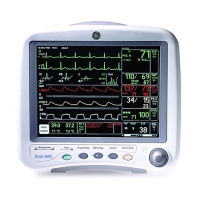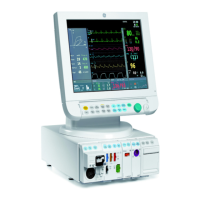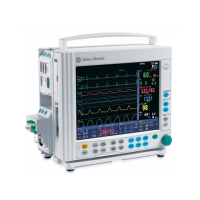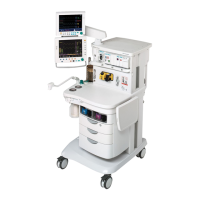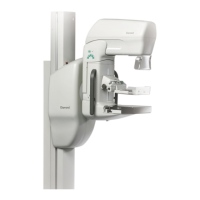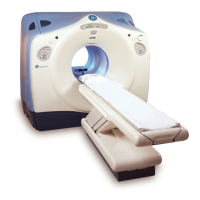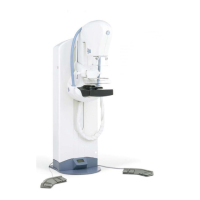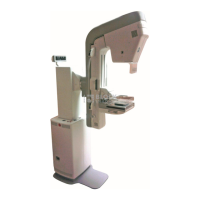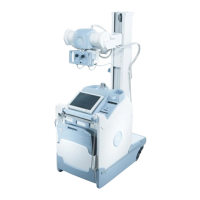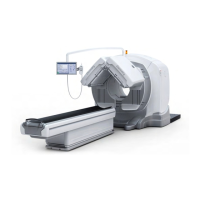2042480-001 C Dash 2500 Patient Monitor 9-17
ECG: Poor Signal Troubleshooting
Poor Signal Troubleshooting
In general, a poor waveform indicates that the signal integrity is degraded
because of “noise” in the waveform. The noise source could be generated by
muscle interference due to patient movement, 60 (or 50) Hz interference,
baseline “wandering,” saturation due to mechanical movement of one or more
electrodes, or poor electrode connection.
Frequently, when the artifact is initially detected, the ECG parameter continues
to report the last calculated heart rate. During this time, a visual message
appears next to the primary lead label (in the same color as the primary
waveform), and no alarm tone is heard.
If the artifact condition continues to be detected, the parameter becomes unable
to calculate a heart rate due to the excessive “noise” in the signal. It then reports
the heart rate as invalid (dashes). From this point on, the heart rate, as calculated
by the ECG algorithm, remains invalid until the “noise” is sufficiently removed.
When the heart rate becomes invalid due to artifact, the ECG ARTIFACT alarm
will be generated based upon its priority as set in the menu. When the priority is
set to OFF, a visual message appears next to the primary lead label (in the same
color as the primary waveform) and the alarm tone is not heard. When the
priority is set to message, a visual alarm is issued (ARTIFACT message flashes
red next to the lead label) and the alarm tone is heard. When the priority is set to
crisis, warning, or procedural, a visual and audible alarm occurs. However,
when the heart rate becomes invalid, if the priority setting is message or OFF
and ECG is the only available source, the ECG ARTIFACT alarm will be generated
as a procedural priority (visual and audible) alarm. This is done to inform the
user that the patient’s heart rate cannot be monitored due to the excessive
“noise.”
When the heart rate becomes invalid due to excessive noise being detected for
prolonged periods, users should determine the cause of the artifact.
Troubleshooting may help determine the type of interference present.
Muscle Interference
Muscle interference is generally intermittent and of short duration. If muscle
artifact is continuous, the patient may be in distress or the electrodes may need
to be reapplied at different sites. The best defense against muscle artifact
interference is proper electrode placement, avoiding bony prominences and
major muscle groups. Refer to the Procedures subhead for instruction on
electrode site prep technique.
60 or 50 Hz Interference
Line-frequency interference (60 or 50 Hz), if present, is usually continuous (e.g.,
even if a waveform is present, HR may not appear in the presence of 60 Hz
interference). It is best to attempt to find the source of the interference and
remove it. To determine if there is line interference present in the signal, it may
be necessary to change the Display filter option to 0.05 to 100 Hz. Noise in the
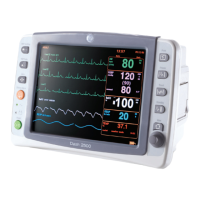
